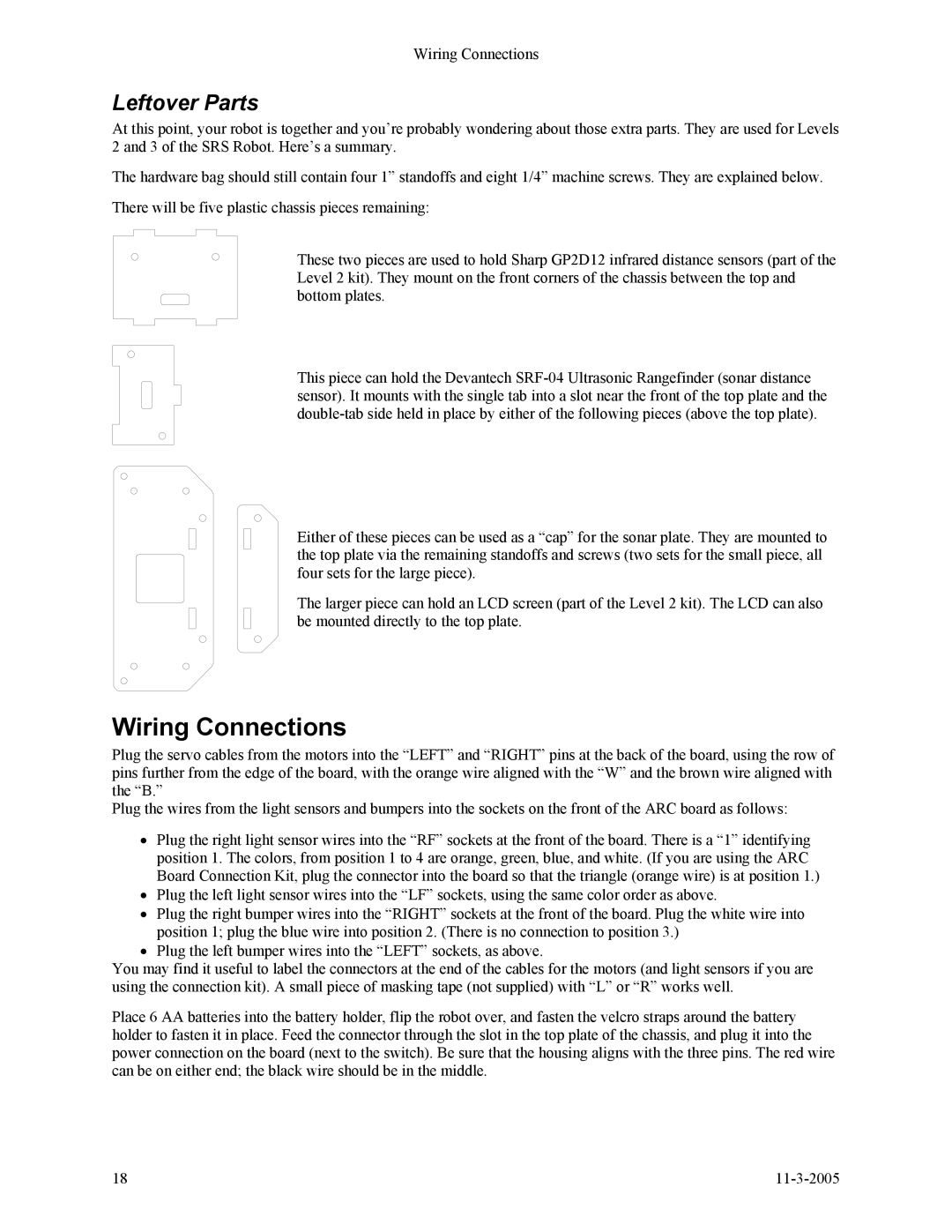
Wiring Connections
Leftover Parts
At this point, your robot is together and you’re probably wondering about those extra parts. They are used for Levels 2 and 3 of the SRS Robot. Here’s a summary.
The hardware bag should still contain four 1” standoffs and eight 1/4” machine screws. They are explained below.
There will be five plastic chassis pieces remaining:
These two pieces are used to hold Sharp GP2D12 infrared distance sensors (part of the Level 2 kit). They mount on the front corners of the chassis between the top and bottom plates.
This piece can hold the Devantech
Either of these pieces can be used as a “cap” for the sonar plate. They are mounted to the top plate via the remaining standoffs and screws (two sets for the small piece, all four sets for the large piece).
The larger piece can hold an LCD screen (part of the Level 2 kit). The LCD can also be mounted directly to the top plate.
Wiring Connections
Plug the servo cables from the motors into the “LEFT” and “RIGHT” pins at the back of the board, using the row of pins further from the edge of the board, with the orange wire aligned with the “W” and the brown wire aligned with the “B.”
Plug the wires from the light sensors and bumpers into the sockets on the front of the ARC board as follows:
•Plug the right light sensor wires into the “RF” sockets at the front of the board. There is a “1” identifying position 1. The colors, from position 1 to 4 are orange, green, blue, and white. (If you are using the ARC Board Connection Kit, plug the connector into the board so that the triangle (orange wire) is at position 1.)
•Plug the left light sensor wires into the “LF” sockets, using the same color order as above.
•Plug the right bumper wires into the “RIGHT” sockets at the front of the board. Plug the white wire into position 1; plug the blue wire into position 2. (There is no connection to position 3.)
•Plug the left bumper wires into the “LEFT” sockets, as above.
You may find it useful to label the connectors at the end of the cables for the motors (and light sensors if you are using the connection kit). A small piece of masking tape (not supplied) with “L” or “R” works well.
Place 6 AA batteries into the battery holder, flip the robot over, and fasten the velcro straps around the battery holder to fasten it in place. Feed the connector through the slot in the top plate of the chassis, and plug it into the power connection on the board (next to the switch). Be sure that the housing aligns with the three pins. The red wire can be on either end; the black wire should be in the middle.
18 |
